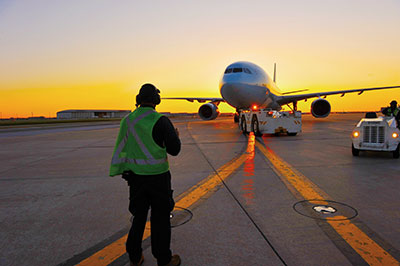
News
Air Surveillance: Finding a new direction
In November 2012 the new International Civil Aviation Organization (ICAO) flight plan was quietly and efficiently implemented – a good example of a process that works.
May 6, 2013 By David Olsen
In November 2012 the new International Civil Aviation Organization (ICAO) flight plan was quietly and efficiently implemented – a good example of a process that works. What is not happening quietly and efficiently is the development of solutions to the two ongoing bogeymen of flight crew fatigue and airport (and other) safety management systems, not to mention aircraft maintenance engineer fatigue management, the Dreamliner problems and amended Water Airport Regulations, to name but a few.
 |
|
| It is time to de-politicize Transport Canada and let the staff get on with doing the jobs that need doing – and of course, fund the job properly. Photo: Air Canada
|
In 2010, Wings published reports on flight and duty time limitations (FDTL) and fatigue risk management systems (FRMS). After much work by New Zealand, Australia, the United Kingdom, ICAO, FAA and others since 2006, Transport Canada somewhat belatedly struck a Canadian Aviation Regulation Advisory Council (CARAC) Flight Crew Fatigue Management (FCFM) Working Group. Convening 14 times between August 2010 and December 2011, the group submitted its final report to CARAC in August 2012 – and that’s when the cat really got among the pigeons. Fred Jones, president of the Helicopter Association of Canada, had already highlighted dysfunctionalities in the group and the report was not unanimous. Most of the members dissented and in January they sent a blistering criticism of Transport Canada, the co-chairs and the report to Transport Canada’s director general of civil aviation (DGCA).
A major criticism was that Transport Canada was trying to force a one-size-fits-all approach on the whole industry. In the Wings fatigue feature, we reported an industry expert’s view that “the nation’s regulating body is not so much broken as it is dysfunctional.” The dissenting industry experts sure made the dysfunctional point in spades when it came to the FCFM working group!
Despite having received a presentation from Australia’s Civil Aviation Safety Authority, the FCFM working group seems to have ignored the 2012 CASA notice of proposed rule making (NPRM), which stated “the proposed rules would introduce a graduated approach to fatigue regulation so air operators can use the most appropriate set of standards for their type of operations.” Furthermore, while the Canadian process has descended into chaos and confrontation, Australia has completed public consultation on FCFM and, to accompany the introduction of the new rules (civil aviation order 48) in April, has produced an excellent free booklet on managing fatigue. Operators will complete transition to the new rules by April 2016, by which time cabin crew fatigue management rules will also be implemented.
On the airport front, things are equally murky. In October 2012, the Airport Management Council of Ontario sent a letter to the Transport Canada DGCA noting that there had been a 100 per cent failure rate on approvals of airport safety management manuals in the Ontario region and blaming Transport Canada for a lack of resources and guidance.
Similarly, those who have been waiting many years for CAR 322 to replace the ancient TP 312 (Aerodrome Standards and Recommended Practices 4th Edition, March 1993) had better plan to keep waiting. Transport Canada Policy Letter 121 from 2002, spoke of “continuing work,” which has not seen the light of day 11 years later. And if you are planning on writing an airport operations manual (AOM), good luck. The excellent specimen AOM format document for airport operators disappeared in the last century and has never been seen again.
All this seems to be just the tip of the iceberg. That is not to say that Transport Canada is totally wrong, nor is industry totally right. But the situation is a mess and the sooner the minister wakes up to the fact and moves Transport Canada from being a political “yes man” to a genuine expert-based organization working for the good of industry, the public and aviation employees, the sooner we might start catching up to Australia and other countries. It is time to de-politicize Transport Canada and let the staff get on with doing the jobs that need doing – and of course, fund the job properly. Tax cuts may sound sweet on the election trail, but in this business it can mean aircraft falling out of the sky.
Just around the corner, there are changes coming for business aviation. New regulations will amend CAR 604 and address all aspects of private aircraft operations. At this time, all private operators will need to hold Transport Canada Private Operator Certificates and comply with the subpart 604, which, according to the Canadian Business Aviation Association should be a more streamlined regime than at present.
David Olsen has spent more than 50 years in aviation, in the Royal Air Force, DCA New Zealand, Transport Canada, ICAO, IATA, industry and as a consultant and writer.